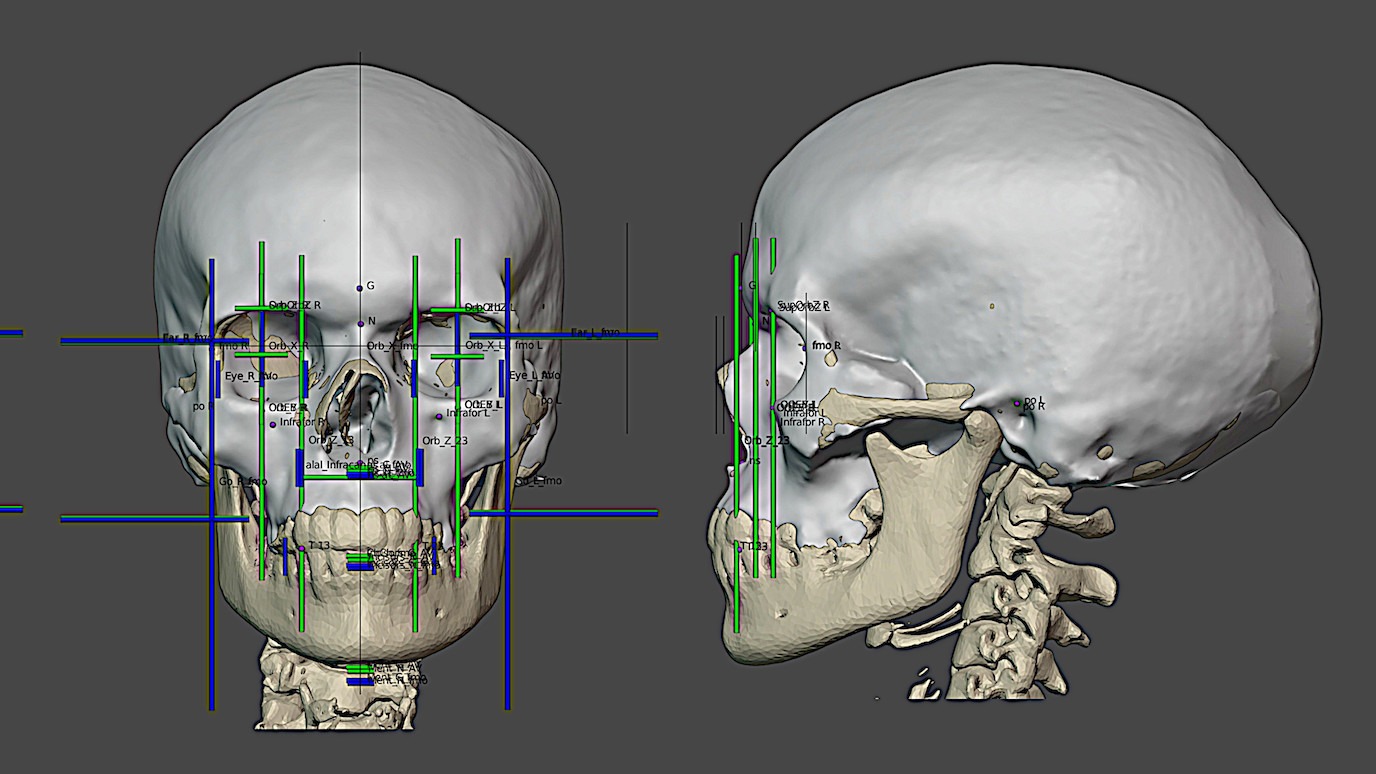In 1881, archaeologists discovered the skull of a man buried in a cave in the village of Mladeč on the territory
Experts corrected the mistake that scientists made140 years ago. It turned out that the so-called Mladeč 1 skull belonged to a 17-year-old woman who lived during the Aurignacian period. It belongs to the Upper Paleolithic (approximately 43,000 to 26,000 years old). The scientists published their findings as part of a new online book, A Forensic Approach to the Study of the Mladeč 1 Skull. In it, experts detailed how scientists had reclassified the sex of “one of the oldest Homo sapiens found in Europe.”
 The researchers used line projection,corresponding to the boundaries of soft tissues and bone structures, to create an approximation of the face. Image Credit: Cicero Moraes/Jiri Sindelar/Karel Drbal
The researchers used line projection,corresponding to the boundaries of soft tissues and bone structures, to create an approximation of the face. Image Credit: Cicero Moraes/Jiri Sindelar/Karel Drbal
For re-identification, scientists usedinformation collected during 19th-century archaeological excavations, forensic facial reconstructions performed by researchers in the 1930s, and CT scans to create a digitized image of the skull. Since the lower jaw was missing, experts turned to existing data on modern human jaws. So they filled in the blanks about what this person might have looked like.
Read more:
It turned out what happens to the human brain after one hour in the forest
It became known which tea destroys protein in the brain
Strange sea creatures in the depths of the ocean turned out to be similar to humans